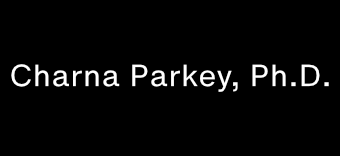Monologue by Charna Parkey, host of Signal from Noise.
0:09 I think we’re bad communicators. Especially at work.
You know what it’s like: you’re in the middle of explaining an idea to someone, and then you look up at their face and the only thing that’s clear is that they … just … don’t … get it.
If only you could find the perfect words—the right signal—maybe they would understand.
0:36 I’m Charna Parkey, and I’m an applied language scientist… a word nerd. For more than 10 years I’ve been applying my PhD in signal processing theory to practical systems, first in the aerospace and defense field and now in high tech.
I’ve given talks on emergent language patterns, I’ve built and led teams of engineers, and I’ve developed new technologies for using data to improve writing. I’m currently Textio’s Applied Scientist where we invented an augmented writing engine to predict who’s going to engage with the language you’re composing, in real time as you write.
1:12 And now I’m your host of Signal from Noise, where I’ll try to illustrate some of the ways that language so often gets in the way of good communication at work. And what we can do to fix it.
We’ll be looking at the hard conversations: the ones that we avoid because we don’t have a shared language for them. The crucial conversations that seem to be off limits and are preventing us from bring our whole selves, our authentic selves into our relationships at work.
1:43 I’ll engage in real conversations with real people in my life and try to get to the heart of the issues you may encounter.
We’ll pull in some experts who can speak to the nuance of approaching topics like racism, gender expression, mental health, and domestic violence—the ones that make us hesitate and hold back from engaging with people at work.
And then I’ll tie it all together at the end of each episode with some shared language where you can start to engage in these conversations yourself, with linked resources.
We might be bad communicators but we can change the way we communicate for the better. Let’s find the signal in the noise.



